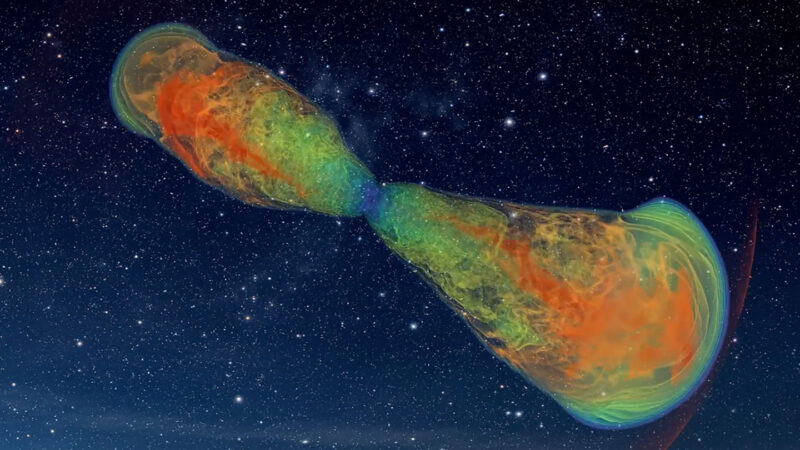
Cocoons of debris around dying stars could shake ripples in spacetime unlike any astronomers have ever seen.
“This is a potential source of gravitational waves that has never been investigated before,” astrophysicist Ore Gottlieb of Northwestern University in Evanston, Ill., said June 5 in a news conference at the American Astronomical Society meeting in Albuquerque.
The waves could potentially be picked up in the latest run of LIGO, which began on May 24.
Since LIGO’s first detection in 2015, all the gravitational waves seen thus far have been from the spiraling death dance of two compact objects — black holes, neutron stars or both (SN: 2/11/16). These events give off what are called coherent gravitational waves. “You can think of it as an orchestra playing harmonically,” Gottlieb said.
A second type, incoherent waves, are expected to come from stellar explosions like supernovas (SN: 5/6/19). Because those bursts are spherically symmetrical and relatively slow, their waves are difficult for LIGO to detect. They’re more analogous to individual instruments playing different songs at the same time.
Gottlieb and colleagues considered another type of stellar death called a collapsar. When massive stars collapse into a black hole, they can emit jets of material traveling close to the speed of light. Computer simulations of how those jets form revealed a cocoon of material surrounding the jet, full of hot, turbulent gas and debris that expand in an asymmetric bubble around the dying star, says Gottlieb, who presented the research June 6.
As the bubble expands and pushes its way through the star, it could bump spacetime enough to produce incoherent gravitational waves, Gottlieb and colleagues concluded.
LIGO and its fellow detectors — Virgo in Italy and KAGRA in Japan — currently have about a 1 percent chance of detecting cocoon gravitational waves. In future runs with improved detectors, that chance will go up.
Catching these waves could give astronomers a glimpse into the innermost parts of dying stars, which can’t be studied any other way, Gottlieb said.
For all the latest Technology News Click Here
For the latest news and updates, follow us on Google News.
